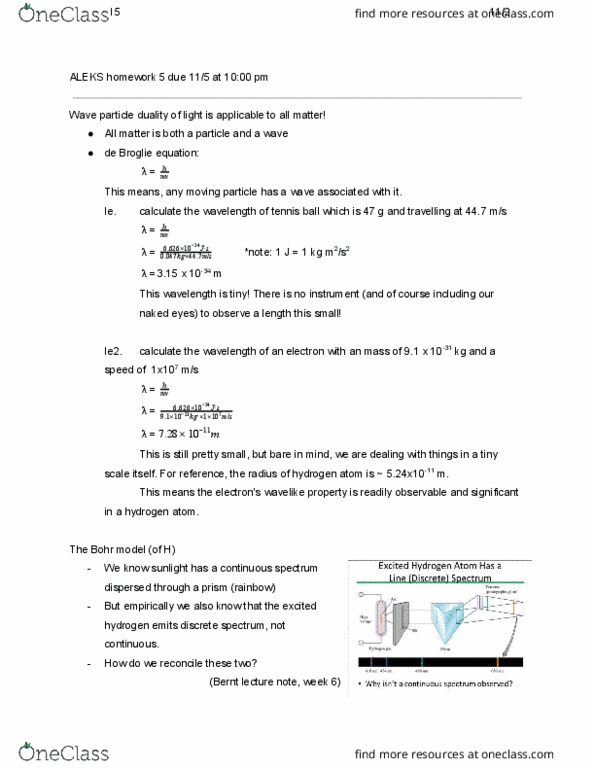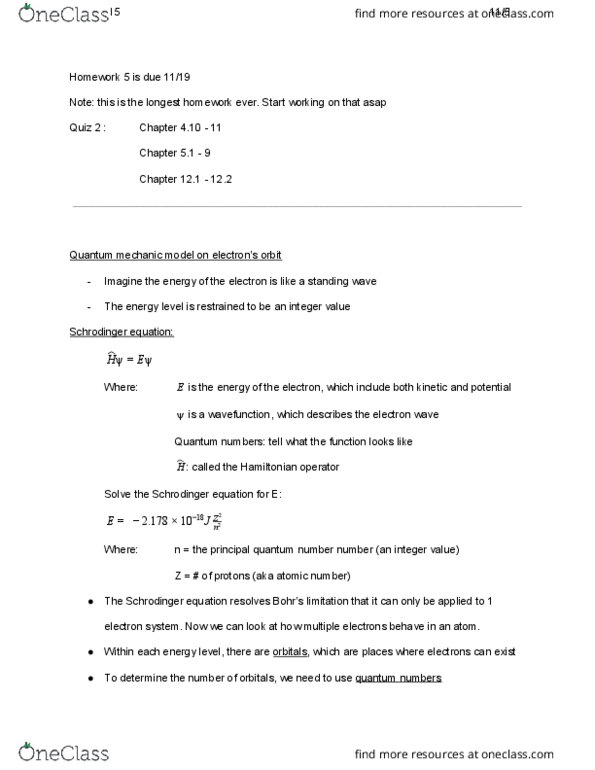CHEM 1A Lecture 16: Schrodinger Equation, Quantum Numbers, Heisenberg's Uncertainty Principle, Orbital Shape and Number
CHEM 1A verified notes
16/31View all
Document Summary
Imagine the energy of the electron is like a standing wave. The energy level is restrained to be an integer value. E is the energy of the electron, which include both kinetic and potential is a wavefunction, which describes the electron wave. Quantum numbers: tell what the function looks like. Where: n = the principal quantum number number (an integer value) Z = # of protons (aka atomic number) The schrodinger equation resolves bohr"s limitation that it can only be applied to 1 electron system. Now we can look at how multiple electrons behave in an atom. Within each energy level, there are orbitals , which are places where electrons can exist. To determine the number of orbitals, we need to use quantum numbers. N = 1, 2, 3, . = [0, n-1], meaning can taken on any value from 0 up to n-1. Designates orbital shape (s, p, d, f)




